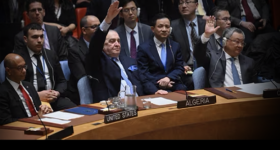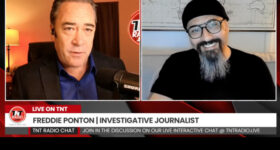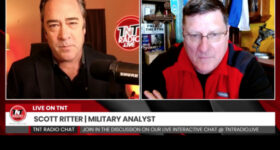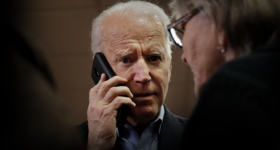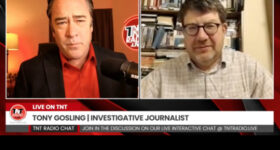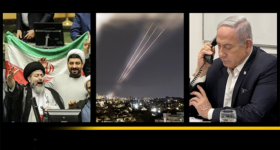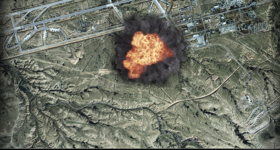 Patrick Henningsen
Patrick Henningsen
21st Century Wire
The recent show of force by the United States towards North Korea marks one of the lowest points in modern diplomacy, but beyond the geopolitical theatrics, it turns out that very little is actually known about the so-called ‘North Korean threat.’
North Korea’s latest series of weekly verbal provocations towards South Korea and their ally the US – should be taken seriously in diplomatic terms, but from a nuclear standpoint, is Pyongyang’s bark worse than its bite?
Instead of taking the high road of international diplomacy, President Obama’s liberal war hawks have opted for a more neoconservative approach by baiting the North Koreans with a nuclear-capable US B-2 Stealth flyover of the country, alongside F22 aerial exercises and a US Navy Destroyer parked off the South Korean peninsula this week.
Further fanning the flames (or so it seems), China also mobilised some of its own troops and military assets along the North Korean border.
Is North Korea really a threat to its neighbors? If it is, this may have more to do with how the international community is treating this small Asian nation than how “the regime” is treating its own citizens. The regime in Pyongyang is clearly one on the brink of collapse. The reality is that the crypto-Marxist North Korean nation is one of the planet’s most marginalized states, not only on a diplomatic level, but also on an economically too – as evidenced by the state’s extreme internal propaganda designed to reinforce the state’s unworldly narrative for its own population.
Knowing full-well that North Korea is already being strangled economically and effectively being starved by blanket UN and other sanctions, is it such a wise move for the US to poke them further?
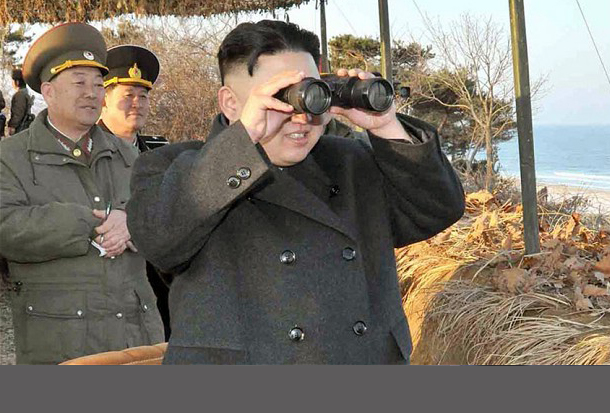
As the young Kim Jung-un (photo, above) carries on his late father and grandfather’s tradition of an ongoing surreal state-run propaganda campaign, so does the United States carry on with its own slightly more sophisticated brand of propaganda as well. For the average American, their general grasp of geopolitical risk and strategy is still on the level of the film Team America and perception managers in Washington DC knows this, and so they regularly attempt to pass off shallow and even anecdotal intelligence as definitive, and proceed to build its foreign policy on top of this.
Still, among all the public war chatter back and forth between the US, South Korea and North Korea, one serious question is being mostly ignored: with regards to Pyongyang, what is exactly real, and what is fiction? Are they really a nuclear threat? If we ask this question, then the next most logical question naturally follows: to what degree is Washington DC inflating the threat from North Korea, and why?
The US ‘War Economy’
There a very powerful vested interests in the US corporate structure who have and will continue to benefit from a heated arms build-up, and will certainly use the North Korea threat as a justification to push forward in spending, especially in light Washington’s new-found austerity culture ushered in through recent budget sequestrations. America’s new pivot towards Asia provides the catch-all policy net, while the two-way propaganda duel between the two countries provides the media atmosphere of fear required to justify a new military build up in the region. This in turn triggers an arms race with China and Japan arming-up, and the US pushing for additional military venues in countries like the Philippines.
In recent weeks and months, experts in Washington and the UN have been at pains to clarify and actually prove the full scope and ability of the North Korean nuclear threat, which so far, seems to be mostly theatre and very little substance.
.
Pyongyang’s nuclear tests
Beyond all the flamboyant rhetoric from the succession of Dear Leaders, and beyond all of their spectacular military parades, there is very little proof that North Korea is advanced in its military prowess and nuclear abilities than many are led to fear in the United States and Western Europe. Their recent nuclear test on February 19th of this year was a perfect example of this.
US officials have speculated that North Korea has upgraded its nuclear capabilities from plutonium, to a much more effective enriched uranium ‘HEU’ type warhead.
When no such evidence, or even tell-tale physical data, was picked up from North Korea’s recent test – including readings taken from Japanese aircraft and multiple monitoring stations in South Korea, it prompted US officials to claim that the North Koreans had somehow “went to some length to try to contain releases. One possible reason to try to contain releases is secrecy, so we don’t know very much about their nuclear testing.”
In a recent report published in the Washington Post this week, a former senior Obama administration official admitted there is no evidence of any such advancement, saying frankly, “We’re worried about it, but we haven’t seen it”.
These type of statements leaked into the media are seemingly always done under anonymity, perhaps because those people issuing them are in fear in of losing their jobs because their intelligence assessment does not jibe with US foreign policy rhetoric, or because it simply does it promote the need for an expensive arms race.
Moreover, following North Korea’s previous test in 2009, US officials were on record as saying that unfortunately, the blast ‘left no detectable traces’.
Not convinced that North Korea’s capabilities are anything less than the most advanced, one U.S. official with access to the classified data on the tests derides the lack of evidence, claiming that: “Still, it would not be surprising for North Korea to take extra steps to prevent outsiders from gaining insights into its nuclear capability”.
As is the case with Iran, politicians in Washington and their corporate media partners have sought to validate the nuclear threat in such a way that suggests a pre-emptive strike may be necessary in order to ‘save lives.’ Although we are used to hearing this every day in the US and Europe, that concept of a pre-emptive strike has has very real implications and meaning for a country like Japan (a victim of a double US pre-emptive nuclear strike), and most recently by using a pretext of Weapons of Mass Destruction (WMDs) in Iraq, and now again in Syria.
Constantly, we see US officials sculpting the narrative in order to fit into a preconceived conclusion. Very sophisticated propaganda indeed.
Attaching North Korea to Iran
The big danger with Washington and its allies’ polarising approach to foreign policy today is that it is eerily remnant of the type of power-politics that led the world into two previous world wars. Enter the ‘Axis of Evil’.
In order to joint North Korea and Iran at the hip, links are needed, and speculation is then used in order to build the type of theoretical case that one often sees emanating from the mouths of both hosts and guests on networks such as FOX News, CNN and the BBC, which is then taken on by the general populace as a genuine threat, skillfully articulated by an official source. Although less blunt than Kim Jung-un’s style of state-run propaganda, it’s just as effective in the end.
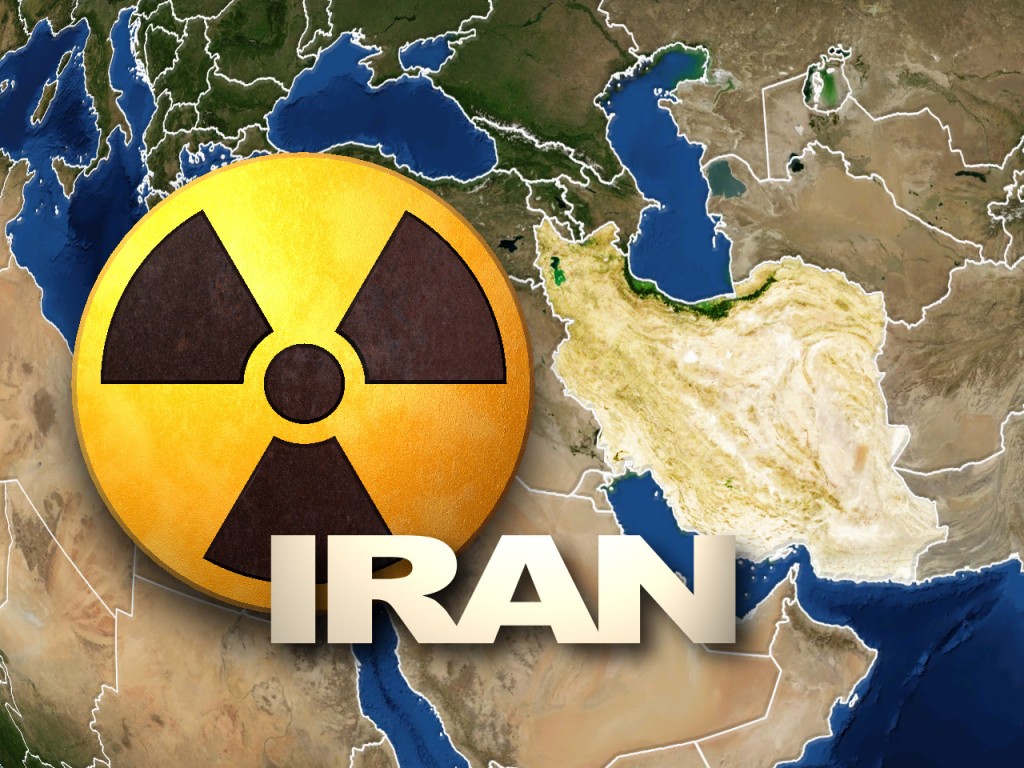
IMAGE: Iran has been attached to North Korea through Washington DC’s ‘Axis of Evil’ concept, after pursuing its own nuclear power program.
Still, there is no actual hard evidence to show that North Korea and Iran are sharing uranium enrichment technology, which is of course countered by US officials by claiming that, ‘the sharing of enrichment know-how would be harder to spot than missile know-how’, and also admitting, ” and adding, “They cooperate in many areas, especially missiles. Why it hasn’t yet extended to the nuclear program is frankly a mystery.”
Again with Syria, the North Koreans are thought to have signed a technology exchange agreement with Damascus over a decade ago, which U.S. officials ‘think’ led to the construction of a secret reactor near Deir al-Zour which the Israelis bombed in 2007. Did this facility have anything to do with nuclear weapons? We’ll never know for sure, and neither will the intelligence community based on the ambiguous comments by US officials.
Breaking the international nuclear monopoly
Most of the western narrative of rogue nuclear threats stems from the alleged exploits of Pakistani scientist A.Q. Khan, who is accused of peddling black-market enrichment technology to various foreign governments. The reality is much more complex and might surprise followers of A.Q. Khan’s résumé of international intrigue. Both North Korea and Iran’s nuclear programs have made strides mostly through the help of two countries… the US and Britain.
Former US Secretary of Defense Donald Rumsfeld was key in doing the deal which allowed Swiss technology giant ABB to supply North Korea with two nuclear power plants located near Kumho, on North Korea’s east coast. The US would have known full well when this took place in 2000, that any waste material from the two reactors might eventually be used towards creating weapons-grade material.
Likewise, Iran’s first functional nuclear reactor at the University of Tehran was designed and built by the US and Britain during the Shah regime. From this technology, Iran was able to replicate and expand the domestic nuclear energy and medical isotope capabilities.
Linking either Iran, or Syria, to the nuclear activities of North Korea based on conjecture and half-baked intelligence would be a mistake by US politicians and overzealous policy think tanks in Washington. If we continue to see this happening, then you can wager that the west may be working hard to create an Axis of Evil with whom to do battle with at a future date.
The reality behind all of the nuclear arms rhetoric from the west is that there exists an international cartel monopoly on the building, engineering and fuel transportation in the nuclear power industry. Notice that North Korea said on Tuesday that it would restart its nuclear reactor. Some report that this is to feed its atomic weapons programme, but it’s hardly mentioned in the western media and political circles that North Korea has energy independence needs too. The situation with Iran is almost identical, who itself is also being starved and put under extreme economic sanctions as well.
Both countries need energy independence and both countries are more or less operating outside of the international nuclear cartel. The nuclear industry’s global cartel has three main players who divide the trade amongst themselves exclusively. Production material is handled by France, production systems are handled by the United States, and reprocessing is done by the British. One could easily argue then, that both North Korea and Iran have been labeled as ‘Axis of Evil’ because it is seen as competition.
China’s stewardship of North Korea
It stands to reason that Pyongyang sits in the shadow and exists at the pleasure of its superpower neighbor and chief, China. Many an analyst or pundit will tell you that they cannot make a move, much less pick a fight with the West without China knowing or endorsing such a move.
Even a minor nuclear test carried out by Pyongyang is of interest to China considering its proximity and the many risks involved in testing nuclear weapons.
If North Korea launched any nuclear strike against the US, South Korea or Japan, if would almost certainly result in retaliation by the US. The fall-out from any military nuclear detonation by the United States inside North Korea, would certainly be of chief concern to the Chinese. Central planners in Washington also know that any major escalation with North Korea will not only involve China, but Japan and Russia too, which would also be a pretext more a multi-regional war.
Taking all this into account, unless North Korea wanted to become extinct, or the US and its allies wanted to spark an all-out third world war intentionally, it’s hard to see this drama playing out in the way that the US media and Washington DC politicians and experts are always alluding to.
Risks of military confrontation
The regime in Pyongyang is one of the most over-the-top and bizarre governments on earth, and they are certainly totalitarian in nature.
North Korea may have the motivation to lash out at an international community that has imposed collective economic punishment upon them for so long, it’s clear that should they challenge the US and its allies in the region, they have neither the resources, nor the capability to sustain any kind of meaningful military campaign. What they probably need right now, more than anything is food.
The US B-2 fly-by of North Korea should tell the world all they need to know about the true nature of the North Korean threat.
On Friday, South Korean officials admitted that to their knowledge, North Korea is not targeting the US mainland with nuclear missiles, which contradicts official government propaganda coming out of both North Korea and the US. So the US is merely validating Pyongyang propaganda – on more levels than one. If, for whatever reason, the Washington DC wanted to replace the current South Korean regime, or to harden Japan’s pro-American resolve, then pressurizing the North Korean regime would be one path to achieve that outcome.
Perhaps the most dangerous aspect of this hyping of a confrontation in the region is that either side – is that the North Koreans or the US might make just one fatal technical error or mistake resulting in a shooting match, followed by a nuclear strike. Even worse and much less remote than some would care to admit, is the possibility of a staged false flag event that could be used to plunge the situation into a new war (it would not be the first time in history that the US has chosen such a route to war).
.
People can speculate on the risks of war from either side of any potential conflict, but in this case, Washington DC’s ‘pivot towards Asia’ is very real indeed, and more and more assets are being deployed to US bases around China, as well as the Middle East and Africa. The United States already occupies and maintains hundreds, if not thousands of military installations and sites all over the world – and in these times of economic cuts, the military industrial complex requires more deployments of troops and more orders of equipment, as well as new conflicts and dark combat theatres in which to test newer technology. Leases on bases in places like the DMZ, Japan and the Philippines need to be renewed also, in order to preserve those dollar havens overseas. The US depends on opening new bases in these locations to spread its military seed overseas. This is how the machine has functioned since World War II, through the Cold War, and this is exactly how it is functioning today.
To fuel this giant military economy there needs to be a constant threat of an enemy attack. Because of this, US politicians (managed by lobbyists from the ‘defense’ industry) are all too willing to validate any mythological threat which will help to drive the military industrial complex which pays for their political careers.
It is the most dangerous game of monopoly the world has ever seen. Many have argued that in 2013, this empire is unsustainable. Some have even gone so far as to call it insane, but it will carry on nonetheless – unless American voters wake up to the plot and demand a new agenda.
Presently, there are more conflicts and resource wars going on around the globe than at any other time in history, and the danger of a multi-regional conflict is drawing nearer with every day that our international leadership fails to see how 21st century power-politics are threatening global stability and peace.
Let’s seriously hope that cooler heads, and some common sense, prevails in the end.
READ MORE NORTH KOREA NEWS AT: 21st Century Wire North Korea Files





